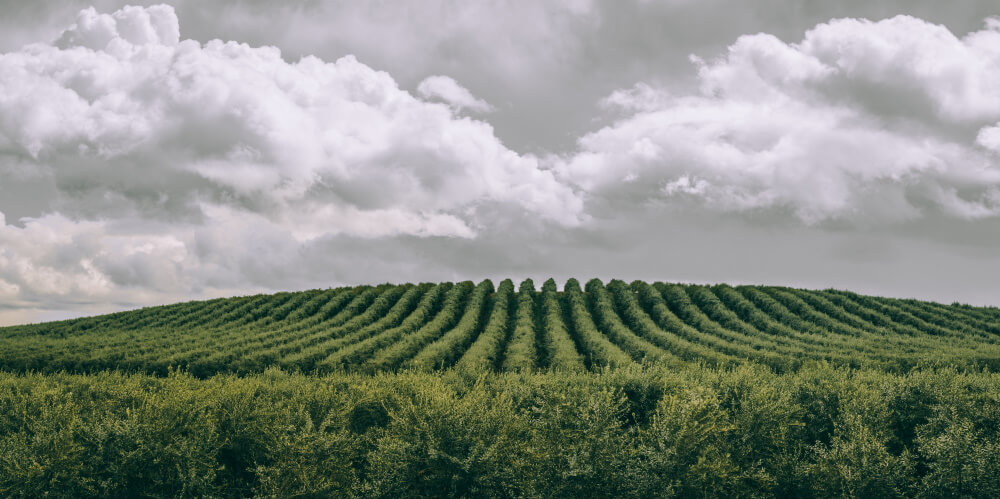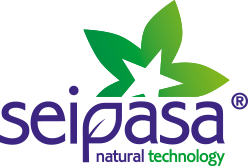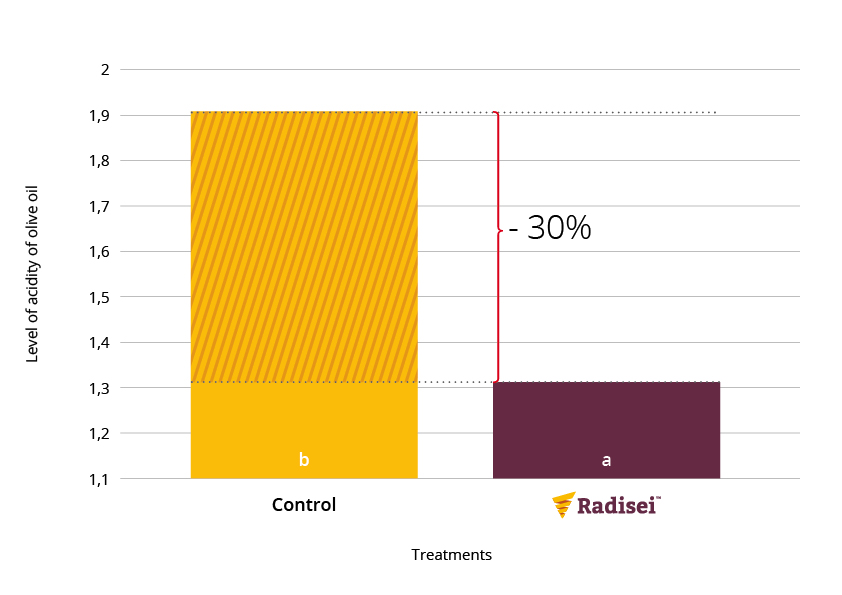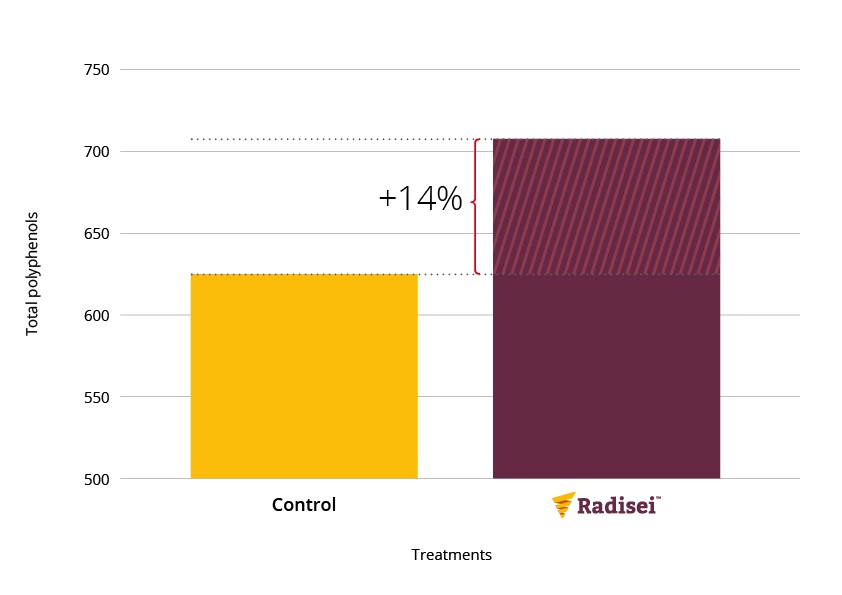Super-intensive olive orchards: biostimulation keys to improve quality parameters

Olive-growing, Spain’s second biggest crop, surpassed only by cereal grains, has gradually left behind the traditional system and is rapidly advancing with increasing impetus towards a super-intensive production model.
Although rainfed olive orchards are predominant in Spain (70% of the olive-growing surface area, according to the Survey on Crop Areas and Yields carried out by the Ministry of Agriculture), the advance of new production systems towards hedgerow and super-intensive olive plantations, as well as the needs and requirements demanded by the market, all point to a much deeper revolution taking place in the medium and long term. Seipasa, well aware of this new paradigm, has developed its innovative Radisei root biostimulant, a solution designed meet the production and quality requirements this crop demands.
At present more than 850,000 hectares of olive orchards are under irrigation in Spain. This figure may seem low when compared to the almost 1,900,000 hectares that still support rainfed olive orchards, but, as always, the key is to be found in the trend in figures. We are reminded by the data that just 35 years ago there were barely more than 100,000 hectares of irrigated olive tree plantations. In just the past 9 years the irrigated surface area has grown by 14% compared to a mere 2% increase in the case of rainfed plantations.
From one point to another on the time scale we can observe a slow but inexorable reconversion of the industry towards super-intensive and hedgerow olive orchard systems. Advances in mechanisation and technology and, in particular, producers‘ needs for cost-effectiveness, explain these nuances that, little by little, are gaining ground in the overall picture of olive-growing in our country.
With the average crop yields of irrigated plantations more than doubling those of rainfed systems (1,700 kg/ha compared to more than 4,200 kg/ha, according to the 2019 figures published by the Ministry of Agriculture) there are various keys that underpin handling and management on these high-density farms. One of these involves the treatments that are applied to olive orchards in terms of biostimulation, especially when dealing with super-intensive plantations with densities that vary from between 1,500 and 3,000 trees.
In these systems, trees have to start producing as quickly and efficiently as possible, which means that they are subjected to very high demands. It is exactly at this point that Radisei comes into play as Seipasa's new root biostimulant designed to optimise nutrient absorption, provide a good start for crops and ensure a high-quality final production.
Integrated olive orchard biostimulation
Radisei is developed from an exclusive strain of Bacillus subtilis. This plant growth promoting rhizobacteria (PGPR) improves the root system's architecture by encouraging the growth of new roots and absorbent hairs which help the plant to harness the soil's resources effectively.
Its application unblocks essential micro and macronutrients in the soil which help trees to absorb and assimilate them much more efficiently. Radisei also improves the tree's response to different types of stress in complex environments in terms of temperature, salinity or water stress. This product is registered with the Ministry of Agriculture, Fisheries and Food and certified for organic agriculture under the UNE standard.
Enhanced quality parameters
From a qualitative point of view, Radisei has a significant impact on the level of quality. This is patent from the results of trials Seipasa has carried out in super-intensive orchards of Arbequina variety olive trees.
Graph 1 shows a significant 30% reduction of oil acidity levels in parcels treated with Radisei compared to the control group. Acidity measures the quantity of free fatty acids in oil. The lower the acidity of olive oil the higher its quality is. In fact, it is estimated that reducing acidity can improve the oil price obtained at source by more than 15%.
Graph 1: Level of acidity of olive oil.
Graph 2 shows a 14% increase in the quantity of total polyphenols in the parcels treated with Radisei. This is a significant variable as polyphenols are natural antioxidants that protect the fatty acids in olive oil against oxidation and allow an increase in quality.
Graph 2: Increase in total polyphenols (%).
Ensuring the level of quality of olive oil is fundamental in a country like Spain that is the market leader, and that currently accounts for 50% of world production, according to data published by the International Olive Council.
As part of the new paradigm towards which Spain's olive orchards are shifting, R+D+I work carried out on olive varieties plays an important role. The search is for new varieties that adapt to hedgerow and super-intensive production systems from a technological, genetic and productive point of view, and that have a greater resistance to the diseases that most commonly affect olive trees.
With all these factors in mind and the trends highlighted by all the indicators, the future for olive growing points to a sustained migration towards super-intensive and hedgerow olive orchards, especially in those parts of the country where climatic conditions and available water resources so permit.
It is currently estimated that 70% of the olive growing surface area in Spain depends on the traditional system, 23% uses intensive production systems and the remaining 7%, hedgerow or super-intensive systems. It would appear in no way bold to predict a clear transformation of these figures in the coming 10 years, with a considerable reduction in traditional olive orchards and a significant increase in the surface area given over to super-intensive and hedgerow plantations.
This new reality of our olive orchards occurs hand in hand with certain change-generating agents, one of which is Agromillora. With more than 35 years of experience, this multinational has extensive experience in implementing hedgerow orchard systems using growing




